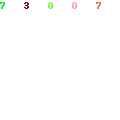Semi Formal Dress
Women's semi-formal dresses are suitable for general celebrations or social occasions.

In terms of style, women's semi-formal dress is a dress that follows the trend in many ways. The length of the skirt, collar, and sleeves remained similar to the styles that were popular at the time. This is in line with the formal dress, and the characteristics of the rigorous coordination of the clothing are very different. Very interestingly, women's semi-formal dresses are often not up and down, it is actually a fashion-oriented dress.

The accessories of the semi-formal dress do not have to be as luxurious and precious as the evening dress. Ordinary metal or plastic products can be used.

Formal Dress
Formal wear, formal attire or full dress is the traditional Western dress code category applicable for the most formal occasions, such as weddings, christenings, confirmations, funerals, Easter and Christmas traditions, in addition to certain audiences, balls, and horse racing events. Formal attire is traditionally divided into formal day and evening attire; implying morning dress before 6 p.m., and white tie (dress coat) afterwards. Generally permitted other alternatives, though, are the most formal versions of ceremonial dresses (including court dresses, diplomatic uniforms and academic dresses), full dress uniforms, religious clothing, national costumes, and most rarely frock coats. In addition, formal attire may be instructed to be worn with official full size orders and medals.

"Formal attire" being the most formal dress code, it is followed by semi-formal attire, equivalently based around daytime black lounge suit, and evening black tie (dinner suit/tuxedo), and evening gown for women. The lounge suit and cocktail dress in turn only comes after this level, traditionally associated with informal attire. Notably, if a level of flexibility is indicated (for example "uniform, morning coat or lounge suit", as seen to the royal wedding of Prince Harry and Meghan Markle in 2018), the hosts tend to wear the most formal interpretation of that dress code in order to save guests the embarrassment of out-dressing.

Since the most formal versions of national costumes are typically permitted as supplementary alternatives to the uniformity of Western formal dress codes, conversely, since most cultures have at least intuitively applied some equivalent level of formality, the versatile framework of Western formal dress codes open to amalgation of international and local customs have influenced its competitiveness as international standard. From these social conventions derive in turn also the variants worn on related occasions of varying solemnity, such as formal political, diplomatic, and academic events, in addition to certain parties including award ceremonies, balls, fraternal orders, high school proms, etc.

No comments:
Post a Comment